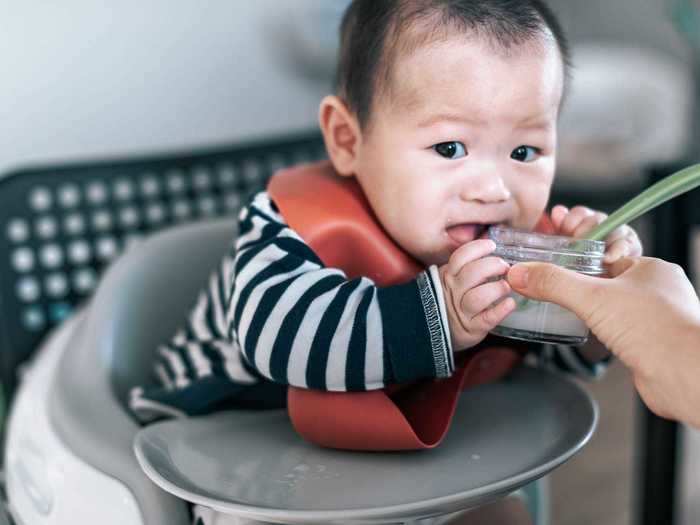New dads in Iceland get at least five months of paternity leave.Ekaterina Shtern/Shutterstock
- Besides Papua New Guinea, the US is the only country in the world that has no national policy guaranteeing leave for new mothers. Of the world's richest 41 countries, the US is one of 15 that does not offer any paternity leave.
- In the US, that burden is placed on individual states and employers.
- Other countries like Finland, Iceland, and Estonia, however, offer dozens of weeks for mothers, and in some cases, for fathers, too.
- Click here for more BI Prime content.
The US does plenty of things well, but providing new parents with paid time off isn't one of them.
Out of the world's 196 countries, the US and Papua New Guinea are the only ones that have no federally mandated policy to give new mothers paid time off. And of the world's richest 41 countries, the US is one of only 15 that does not offer any paternity leave, according to a 2019 Unicef report. That burden is placed on individual states and employers.
President Trump has made strides by calling on Congress to pass paid parental leave in his recent State of the Union, and by signing a measure that grants federal employees 12 weeks of paid parental leave. Still, the country, in 2020, has no guaranteed paid parental leave, despite the majority of Americans supporting it.
If you're thinking of starting a family, here are some places that prioritize parents and give them generous paid leave (at least in comparison to the US).
Read the original article on
Business Insider
Lithuania
Aurimas Mikalauskas/Flickr
Nordic countries get a lot of attention for their generous leave policies, but Lithuania may beat them all.
New moms get 18 weeks of fully paid leave, new fathers get four weeks, and together the parents get an additional 156 weeks to share.
Chris Weller contributed to an earlier version of this post.
Estonia
Johan Viirok/Flickr
Mothers in Estonia are given 140 days of fully paid pregnancy and maternity leave, which may begin 30-70 days before the expected delivery date.
Fathers in Estonia are given two weeks of paid time off to promote extra bonding with their child. After maternity leave ends, parents get an additional 435 days off to share, with compensation calculated at the average of their two earnings.
Hungary
AFN Benelux/Flickr
Hungary offers 72 weeks of paid leave for mothers, according to a UNICEF report.
Norway
Morten Skogly/Flickr
Norway's system is flexible and generous. Mothers can take 49 weeks at full pay or 59 weeks at 80% pay, and fathers can take between zero and 10 weeks depending on their wives' income.
Together, parents can receive an additional 46 weeks at full pay or 56 weeks at 80% of their income.
Serbia
Nadja Tatar/Flickr
Mothers can take 20 weeks of fully paid leave after giving birth, with the amount of money paid calculated by finding the average daily wages a woman made the 18 months prior to giving birth.
After that, they get an additionally full year of leave, but compensation diminishes over time. They receive 100% pay for the first 26 weeks, 60% for weeks 27-39, and 30% for weeks 40-52.
Fathers get one week of fully paid leave.
Iceland
Helga Birna Jónasdóttir/Flickr
Icelandic parents can split their 12 months of post-childbirth leave straight down the middle.
New moms get five months, new dads get five months, and then it's up to the couple to decide how they'll split the remaining two months. Neither parent can transfer any portion of their three-month chunk, however, as the government wants to ensure both parents can work and that kids get to spend time with both.
Sweden
Mads Bødker/Flickr
New parents in Sweden are entitled to 480 days of leave at 80% of their normal pay. That's on top of the 18 weeks reserved just for mothers, after which the parents can split up the time however they choose.
Sweden is unique in that dads also get 90 paid paternity days of those 480 reserved just for them. The idea is to promote bonding between father and child during a time when moms are getting most of the attention.
Belgium
Philippe Put/Flickr
Denmark
Lars Plougmann/Flickr
New moms in Denmark get a total of 18 weeks of maternity leave: four weeks before the birth and 14 weeks after, all at full pay. During the 14-week period, the father can also take two consecutive weeks off.
From that point on, parents can split 32 additional weeks of leave however they see fit. They can extend the leave for another 14 weeks if the child or parent gets sick. By law, the government covers 52 weeks of pay, though not always at the full salary.
Finland
isoteemu/Flickr
Starting in 2021, Finland will give all parents leave, regardless of their gender or whether they are a child's biological parents. Under the new law, each parent will be allowed 164 days, or about seven months, the government said in a statement. A single parent can take the amount of two parents, or 328 days.










